Key Takeaways
1. Product Management: Building Products That Solve Real Problems
As a product manager, it is your job to build (digital) products that solve customer problems, delight your customers, and create value for your organization.
Core responsibilities. Product managers are responsible for understanding customer problems, conducting experiments, delivering value through features, maximizing return on investment, and optimizing existing products. They face challenges related to value, usability, feasibility, and business viability risks.
Essential skills. Great product managers possess:
- High intellect and natural curiosity
- Passion for building products customers love
- Continuous learning mindset
- Empathy and excellent communication skills
- Problem-solving and analytical abilities
- Technological proficiency
Holistic approach. Effective product managers balance product discovery ("building the RIGHT product") and product delivery ("building the product RIGHT"), utilizing appropriate frameworks and techniques for both phases.
2. Strategic Product Planning: Vision, Strategy, and Objectives
A compelling product vision has the following characteristics: Directive, Clarity, Challenging, Focusing.
Product vision. A clear product vision sets the foundation for strategy and roadmap. It should be directive, providing a precise destination; clear, defining the target audience; challenging, motivating the team; and focusing, allowing the team to say no to distractions.
Product strategy. Develop a strategy that outlines how to turn concepts into sustainable, profitable products. Consider:
- Market analysis and growth projections
- Product advantages and unique selling propositions
- Target customers and their needs
- Company capabilities and differentiators
- Competitive landscape
- Key performance indicators (KPIs)
Objectives and Key Results (OKRs). Set concrete goals that help execute the strategy and bring you closer to the vision. Focus on outcome-based OKRs rather than output-based ones. Ensure alignment with company goals, vision, and strategy, and balance product discovery and delivery initiatives.
3. Crafting an Effective Product Roadmap
Instead of listing features, the roadmap contains themes and initiatives.
Theme-based roadmaps. Move away from traditional project plan-style roadmaps to theme-based roadmaps. These focus on:
- Themes: Problems for users or the business you plan to solve
- Initiatives: Opportunities to solve problems and achieve intended outcomes
- Time buckets: Now, Next, Later (instead of specific dates)
Prioritization. Use frameworks like the ICE (Impact, Confidence, Ease) score to prioritize initiatives. Consider:
- Alignment with company goals and product strategy
- Potential impact (user and business value)
- Ease of implementation
- Confidence in success
Flexibility and communication. Treat the roadmap as a living document, regularly updating it based on new insights and changing priorities. Ensure transparency and proactive communication about progress and setbacks to all stakeholders.
4. Product Discovery: Understanding User Needs and Problems
Product discovery is vital to identify user problems worth solving and validate potential solutions in a lean way to save time and money.
Research methods. Utilize various research techniques to understand user needs and problems:
- User surveys: Collect quantitative data from a large group
- User interviews: Gather qualitative insights through one-on-one sessions
- Competitor analysis: Understand existing solutions and market gaps
- Product analytics: Analyze existing user behavior data
- Jobs to be Done (JTBD): Frame user needs as jobs they're trying to accomplish
Data analysis. Make sense of collected data using techniques like:
- User personas: Define target user profiles based on research
- JTBD framework: Identify core user motivations and desired outcomes
- Analytics dashboards: Visualize and interpret quantitative data
Opportunity identification. Based on research findings, define promising product opportunities that align with company goals and product strategy. Maintain a discovery backlog to track and prioritize these opportunities.
5. Solution Ideation and Prototyping: From Concept to Testable Product
Keep in mind, however, that you don't need a perfect prototype at the ideation stage. Concentrate on getting your team to agree on a rough picture of what the solution might look like.
Ideation techniques. Use various methods to explore potential solutions:
- Opportunity-solution tree: Derive solutions from identified opportunities
- Impact mapping: Discover what to build based on desired impacts
- Design sprint: Run a team workshop to prototype and test solutions rapidly
- How-might-we technique: Frame challenges as open-ended questions
Prototyping. Create prototypes to visualize and test solutions:
- Paper-based prototypes: Quick and simple visualizations
- Digital prototypes: Click-through mock-ups or functional prototypes
- Landing pages: Simple websites to gauge interest in potential products
No-code solutions. Leverage no-code tools to build functional prototypes quickly without extensive technical resources. This allows for faster testing and iteration of ideas before committing to full development.
6. Validating Solutions: Ensuring Product-Market Fit
To validate your solution, there are many frameworks and concepts available. The most common ones are: Usability test, A/B test, Survey, Smoke test/Fake door, Staged rollout, Concierge MVP, Wizard of Oz MVP, Letter of intent, Presale or crowdfunding.
Validation methods. Choose appropriate validation methods based on:
- Type of hypothesis being tested (desirability, feasibility, viability)
- Amount of existing evidence
- Time constraints and decision points
Metrics and goals. Define clear metrics and goals for each experiment:
- Quantitative metrics: Sign-ups, conversion rates, usage time, etc.
- Qualitative feedback: User sentiment, usability insights, etc.
- Statistical significance: Ensure sufficient sample sizes for quantitative tests
Iteration and refinement. Based on validation results:
- Improve conversion rates and user experience
- Increase the value proposition of the solution
- Consider pivots or modifications if results are underwhelming
- Be willing to kill ideas that don't show promise
7. Agile Product Delivery: Building the Right Product, Right
Ultimately, it doesn't matter what framework you use as long as you meet your goals, progress toward your product vision, and maintain productivity within your team.
Agile principles. Embrace agile values:
- Individuals and interactions over processes and tools
- Working software over comprehensive documentation
- Customer collaboration over contract negotiation
- Responding to change over following a plan
Framework selection. Choose between Scrum and Kanban based on your team's needs and product characteristics. Adapt the chosen framework to fit your organization's unique requirements.
Effective practices:
- Run regular retrospectives to continuously improve processes
- Create and maintain an agile guide for clarity and alignment
- Write clear, goal-oriented user stories
- Conduct focused daily standups to keep the team aligned and unblock issues
- Implement lean releases and MVP approaches to gather user feedback quickly
8. Metrics-Driven Product Growth and Optimization
Working with data is essential for product managers at all times. So, one of your most important jobs is to make sure that all of the user data for your product is properly tracked and regularly analyzed.
Key metric categories:
- Acquisition: Bounce rate, conversion rate, customer acquisition cost (CAC)
- Activation: Time to value, onboarding completion rate
- Retention: Churn rate, retention rate, engagement metrics
- Revenue: Average revenue per user (ARPU), lifetime value (LTV)
- Referral: Net Promoter Score (NPS), viral coefficient
Data-driven decision making. Regularly track and analyze metrics to:
- Measure progress towards OKRs
- Identify areas for product improvement
- Inform product discovery and prioritization
Continuous optimization. Use data insights to:
- Refine user experiences and features
- Optimize acquisition and retention strategies
- Inform product roadmap decisions and prioritization
- Validate or invalidate assumptions about user behavior and preferences
Last updated:
FAQ
What's "The Product Manager’s Playbook" about?
- Comprehensive Guide: "The Product Manager’s Playbook" by Stefan Richter is a comprehensive guide for both new and experienced product managers. It covers essential steps and principles of product planning, discovery, and delivery.
- Frameworks and Techniques: The book provides various product frameworks and techniques that can be customized to fit specific organizational needs, emphasizing that there is no one-size-fits-all approach.
- Holistic Overview: It offers a holistic overview of the latest product management practices used successfully in organizations worldwide, aiming to elevate product management organizations.
- Resourceful Reference: The book includes numerous references to external resources for further reading, making it a valuable resource for continuous learning.
Why should I read "The Product Manager’s Playbook"?
- Practical Insights: The book offers practical insights into building great products and elevating product management organizations, making it a valuable resource for anyone in the field.
- Experienced Author: Written by Stefan Richter, a seasoned product and tech leader, the book draws from his extensive experience in helping startups thrive.
- Actionable Advice: It provides actionable advice and frameworks that can be applied to both launching new products and growing existing ones.
- Continuous Learning: The book encourages continuous learning and adaptation of product management practices to fit specific organizational needs.
What are the key takeaways of "The Product Manager’s Playbook"?
- Product Planning: Learn how to define a product strategy and roadmap that aligns with your vision and organizational goals.
- Product Discovery: Understand the importance of building the right product by identifying key opportunities and validating solutions.
- Product Delivery: Focus on building the product right through agile development, data-driven decisions, and continuous improvement.
- Customization and Adaptation: Emphasize the need to customize frameworks and techniques to fit the specific needs of your organization or team.
What is the role of a Product Manager according to Stefan Richter?
- Customer-Centric Approach: A product manager's job is to build digital products that solve customer problems and create value for the organization.
- Key Responsibilities: Responsibilities include listening to customers, running experiments, delivering value with a team, and optimizing existing products.
- Risk Management: Product managers face challenges like value risk, usability risk, feasibility risk, and business viability risk, which they must mitigate.
- Essential Skills: Important skills include curiosity, passion for building products, empathy, communication, problem-solving, and technological proficiency.
How does "The Product Manager’s Playbook" differentiate between a Product Manager and a Product Owner?
- Role Clarity: The book clarifies that a product owner is a specific role within the Scrum framework, focusing on feature requirements and backlog management.
- Holistic Role: A product manager has a more holistic role, responsible for discovering and delivering impactful solutions and defining product strategy and roadmap.
- Empowerment: Emphasizes the importance of having empowered product managers who can handle both product discovery and delivery.
- Title and Responsibilities: Encourages organizations to clarify titles and responsibilities to ensure effective product management.
What is the importance of a Product Vision in "The Product Manager’s Playbook"?
- Foundation for Strategy: A product vision describes the dream product and lays the foundation for product strategy and roadmap.
- Characteristics: A compelling product vision is directive, clear, challenging, and focusing, guiding the team towards a common goal.
- Continuous Alignment: The vision should be aligned with the team and stakeholders, requiring continuous iteration and adaptation.
- Crafting the Vision: Crafting a product vision involves collaboration with the team and stakeholders to ensure it is meaningful and ambitious.
How does "The Product Manager’s Playbook" suggest creating a Product Strategy?
- Long-term Plan: A product strategy is a long-term plan that outlines how to turn concepts into sustainable products that drive profits and create customer value.
- Strategy Document: The strategy can be documented to provide space for thoughts and reasons, evolving over time with feedback from stakeholders.
- Key Questions: The strategy should answer key questions about problems, target groups, market development, and success measurement.
- Collaborative Effort: Emphasizes that product strategy is a collaborative and cross-functional effort, requiring alignment with company goals.
What are OKRs and how are they used in "The Product Manager’s Playbook"?
- Objective-Key Results: OKRs are a well-known way to set goals for the organization, typically planned and reviewed every three months.
- Alignment and Contribution: OKRs should align with company goals and contribute to the product strategy, ensuring relevance and focus.
- Outcome vs. Output: The book emphasizes focusing on outcomes rather than outputs, concentrating on problems instead of solutions.
- Challenging Goals: OKRs should be challenging but realistic, inspiring teams to achieve 70-80% completion on average.
How does "The Product Manager’s Playbook" approach Product Roadmaps?
- Theme-Based Roadmaps: Advocates for theme-based roadmaps that focus on outcomes rather than features, avoiding unnecessary planning work.
- Three Buckets: Initiatives are separated into three buckets: Now, Next, Later, prioritizing based on impact and ease.
- Collaborative Planning: Roadmap planning involves cross-functional collaboration and alignment with stakeholders to ensure commitment.
- Living Document: A roadmap should be a living document, representing team priorities based on the latest insights and changes.
What is the Product Discovery process in "The Product Manager’s Playbook"?
- Identifying Opportunities: Product discovery involves identifying user problems worth solving and validating potential solutions in a lean way.
- Five Phases: The process consists of problem research, solution ideation, prototyping, solution validation, and solution refinement.
- Hypothesis-Driven: Encourages a hypothesis-driven environment that values experiments and data-driven decision-making.
- Continuous Learning: Emphasizes the importance of continuous learning and adaptation to build the right product.
How does "The Product Manager’s Playbook" suggest validating solutions?
- Validation Methods: Common methods include usability tests, A/B tests, surveys, smoke tests, and staged rollouts.
- Choosing Methods: Choose validation methods based on the type of hypothesis, existing evidence, and time constraints.
- Defining Success: Define hypotheses and key metrics to measure the success of experiments, ensuring they align with goals.
- Iterative Process: Validation is an iterative process, allowing for pivots or modifications based on user feedback and data.
What are the key principles of Agile Development in "The Product Manager’s Playbook"?
- Agile Values: Agile development focuses on flexibility, collaboration, and continuous improvement, guided by agile values and principles.
- Scrum vs. Kanban: The book discusses the differences between Scrum and Kanban, emphasizing that neither is a one-size-fits-all solution.
- Agile Guide: Suggests creating an agile guide to document delivery processes, ensuring clarity and alignment within the team.
- User Stories: User stories are essential for capturing user needs and desires, helping prioritize features and functions in product development.
Review Summary
The Lean Product Playbook receives overwhelmingly positive reviews, praised for its practical approach to product management. Readers appreciate its clear framework for developing successful products, from problem identification to market fit. Many find it valuable for both beginners and experienced professionals, highlighting its comprehensive coverage of product development stages. The book is commended for its logical structure, real-world examples, and actionable advice. Some reviewers note that it synthesizes concepts from other lean methodologies, while a few find it basic for experienced practitioners.
Similar Books
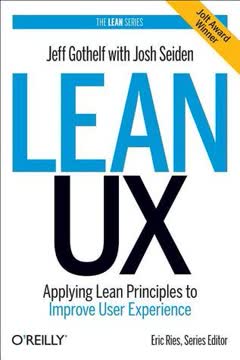
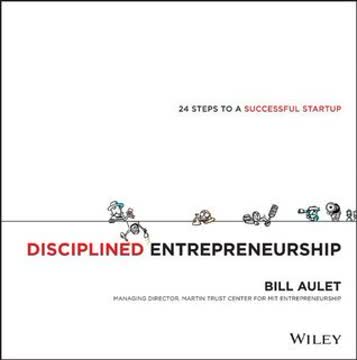

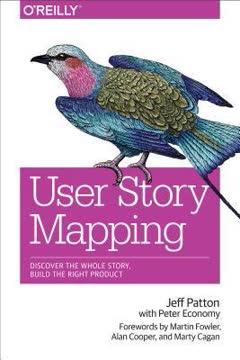
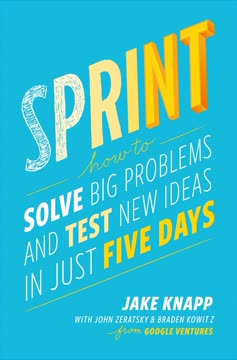


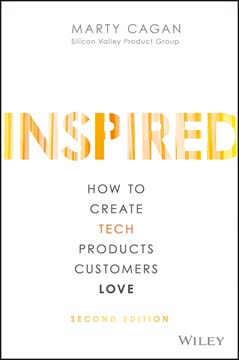


Download PDF
Download EPUB
.epub digital book format is ideal for reading ebooks on phones, tablets, and e-readers.




